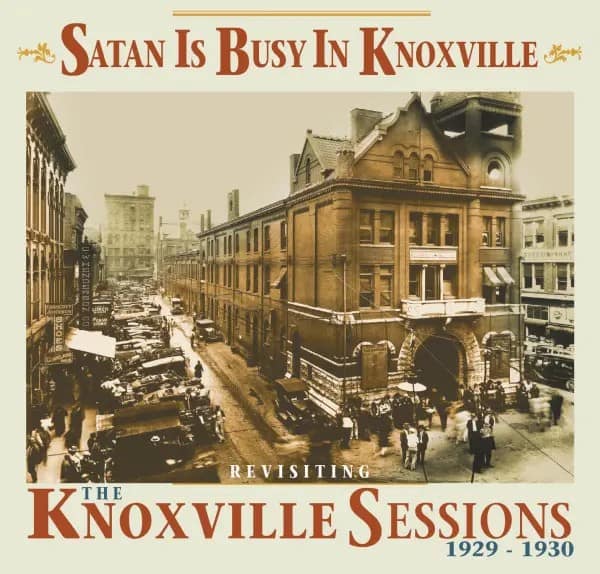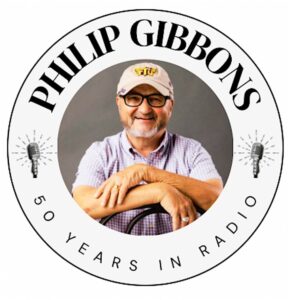Andrew Smith
Managing Editor’s Note: We’re pleased once again to have a contribution from Andrew Smith in Tasmania. Smith is exceptionally knowledgeable about Country Music not just in Australia, but the entire scope of Country Music history. His forth coming biography of Australian Country Music pioneer Tex Morton will be published in Spring, 2023 by the University of Tennessee Press’ Charles K. Wolfe series. In addition to his frequent Country Music publications, Smith has made impressive presentations at the International Country Music Conference. His expertise in Data Base construction has been tapped in projects involving quantitative analysis for Country Music data bases. You may find other reviews of music and books here in the International Country Music Net site with others to come in the near future. For persons outside the United States his review of Satan is Busy in Knoxville refers to Knoxville, Tennessee which is approximately 200 miles east of Nashville.
During the 1920s, some American record companies conducted field trips to regional centers like Bristol, Johnson City and Knoxville, to record local artists for possible future record releases. The most famous of these were the Bristol Sessions of 1927, in which Ralph Peer “discovered” Jimmie Rodgers and the Carter Family.
“Early location-recording sessions came to define hillbilly music,” wrote Patrick Huber:
[They] did far more than allow record companies to identify and record new talent and material with which to expand their hillbilly catalogues. They also established several important industry practices that profoundly shaped this commercial music genre then still in its infancy. Early location-recording sessions came to define hillbilly music as a southern and, despite the industry’s advertising and market claims, an urban and carefully constructed music, complete with a regionalised identity, a fabricated history, and a cluster of iconic imagery that made this music genre both distinctive and commercially appealing.1
Huber argued that although recording companies realised there were specialised, local markets for hillbilly music, they also attempted to give it broader appeal by promoting it in rural and small-towns in the American south and mid-west.2 Field recordings for commercial gain by talent scouts, like Ralph Peer, Frank Walker, Art Satherley, Eli Oberstein and W.R. Calloway were, however, different from those made by academics and folksong collectors like Cecil Sharp, John and Alan Lomax, Sidney Robertson, Olive Dame Campbell and Dorothy Scarborough, who collected songs chiefly for academic purposes, although a proportion of old, traditional material did find its way onto hillbilly recordings—estimates of the magnitude of this proportion vary wildly from about two percent to some thirty three percent.3
The following graph, based on estimates by the late Charles Wolfe, show that the percentages of records from field recordings by Columbia, OKeh and Victor generally increased during the 1920s.

Percentage Of Field Recordings By Columbia, OKeh And Victor: 1929-1930
Fortunately, Bear Family Records in Germany has released three multi-CD sets of field recordings in Bristol (1927-1928), Johnson City (1928-1929) and Knoxville (1929-1930). Each set comprises all recordings made at those sessions. All three, in my opinion, should be in the collections of serious old-time country music enthusiasts, although they are relatively expensive.


They were compiled by Dr Ted Olson, who teaches Appalachian music history at East Tennessee State University, and noted old-time music discographer and expert, British-born Tony Russell. All three sets have been highly commended not only for their music but, importantly, for the wealth of information in the books that accompany each set. (Since Bear Family seems to have opted out of producing multi-CD sets, my advice is to buy these sets now, if you’re interested.
They make for fascinating listening – I once played all the Bristol recordings in chronological order to try to gain insights into the mind of Ralph Peer at the time.)
Both the CDs and their associated documentation have been highly acclaimed. For example, the Bristol box was nominated for two Grammy Awards: Best Historical Album and Best Album Notes. The Knoxville box was nominated for one Grammy: Best Album Notes. The Johnson City box was not entered into the Grammy Awards, but that set won two other music industry awards. The single-CD Johnson City album was named Best Compilation Album by the Independent Music Awards.
For those who can’t afford the multi-CD box sets, Bear Family, thankfully, has produced single-album compilations for the Bristol and Johnson City sets, and – now – the Knoxville sessions. All three comprise re-mastered tracks and new liner notes by Ted Olson that give fresh insights into the sessions. His notes to the single-CD Bristol sessions, for example, placed the claimed “Big Bang” hyperbole often attributed to those sessions in a fresh perspective.
The third single-CD (Satan is Busy In Knoxville) is now available from Bear Family and, like its predecessors, is a worthy addition to a collection of old-time music. The CD comprises 27 newly mastered recordings by artists as diverse as The Smoky Mountain Ramblers, The Perry County Music Makers, and the Etowah Quartet. The associated essays, in a 44-page booklet, are by Olson, Jack Neely and James Rucker. “The Knoxville sessions were different from previous location recording sessions in East Tennessee because the sessions in Knoxville yielded influential early recordings of Black music from Appalachia,” wrote Dr Olson.
Some songs – like “Asleep At The Switch” (by the smooth-sounding McFarland and Gardner, who were influences on Australia’s Tex Morton), and “The Wabash Cannon Ball,” sung here by Ballard Cross – might be familiar to some listeners, whereas many others will be relatively unknown until now. “Back To Old Smoky Mountain” (The Smoky Mountain Ramblers), with its almost Hawaiian backing, contrasts with the gospel “I’m On My Way” by the Holiness Singers, thus assuring the listener of a variety of sounds and styles on the album. The mastering is impeccable.
Additionally, all three single-CD sets are at the lower-end of Bear’s prices and are terrific value for money. The table at the end of this review shows the multi- and single-CDs for each recording location.
I can thoroughly recommend buying from Bear Family, as they are prompt with filling orders, inform buyers of the progress of their orders, and send CDs, vinyl albums and books in secure, Fort-Knox type packages. The CD is also available from Amazon (USA and UK) but, so far, apparently not from Amazon Australia (where Amazon Prime customers don’t have to pay postage).
Satan Is Busy In Knoxville is not only a worthy addition to any collection of early country music but a fascinating insight into 1920s country music (before it was known as such.) Highly recommended.
| Box-set Release | Catalog Number/Link | Single-CD Release | Catalog Number/Link |
|---|---|---|---|
| The Bristol Sessions – The Big Bang of Country Music | BCD16094 | Revisiting the Bristol Sessions | BCD17592 |
| The Johnson City Sessions – Can You Sing or Play Old-Time Music? | BCD16083 | Tell It To Me – The Johnson City Sessions | BCD17591 |
| The Knoxville Sessions 1929-1930, Knox County Stomp | BCD16097 | Satan Is Busy In Knoxville | BCD17593 |
See also
Footnotes
- Huber, P. 2016. “Before ‘The Big Bang of Country Music’: Recording Hillbilly Music on Location Prior to the 1927 Bristol Sessions”. In Cusic, D. (ed) International Country Music Journal 2016. Nashville: Brackish Publishing. p 22
- Huber, P. 2016. “Before ‘The Big Bang of Country Music’: Recording Hillbilly Music on Location Prior to the 1927 Bristol Sessions”. In Cusic, D. (ed) International Country Music Journal 2016. Nashville: Brackish Publishing. p 24.
- Smith, A. 2004. “Comparisons and Contrasts: Recorded Country Music to 1950 in Australia and the USA”, Roots and Crossovers: Australian Country Music Volume 2 (ed Philip Hayward & Geoff Walden). Gympie: aicmPress. p 18.





